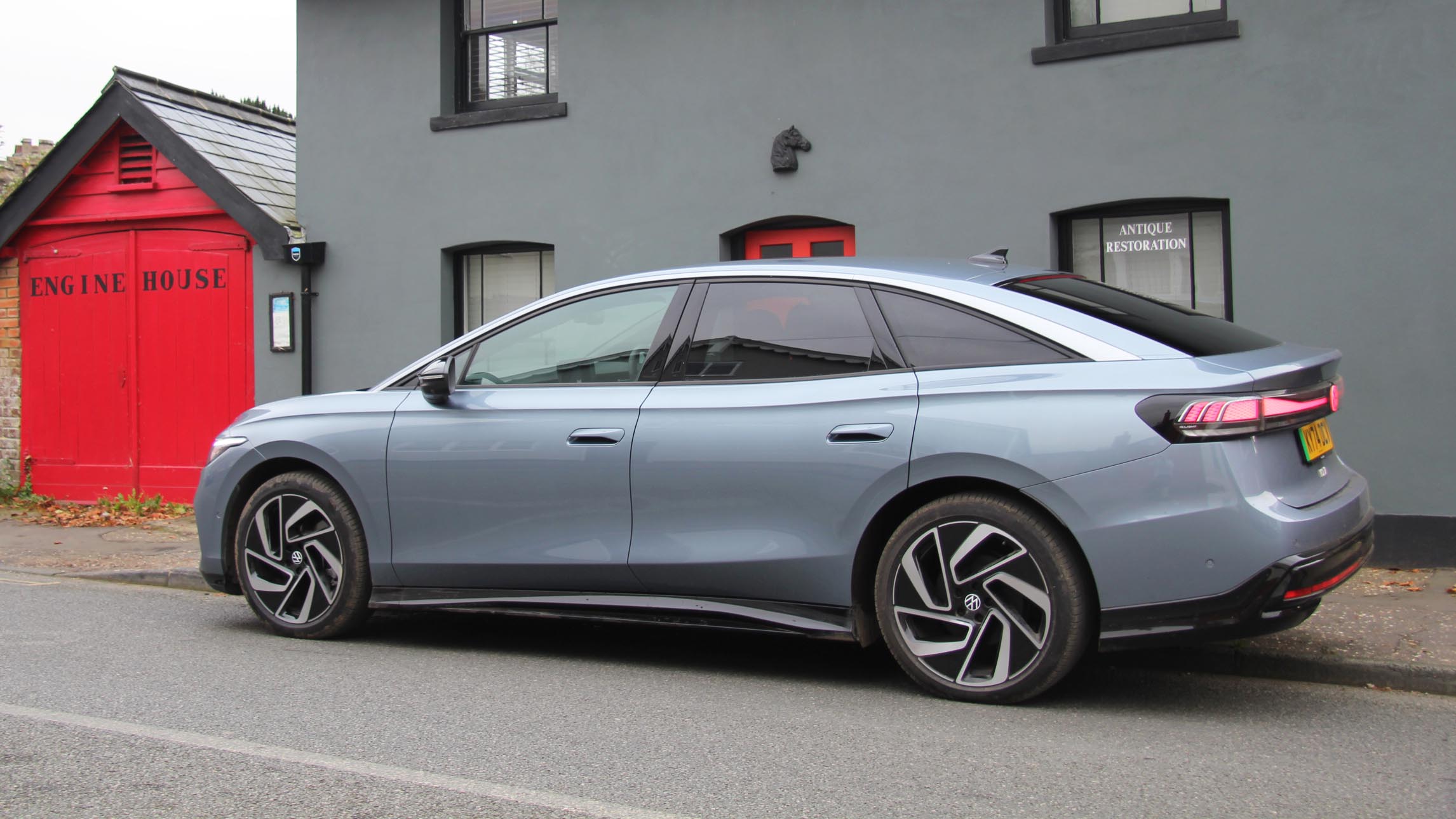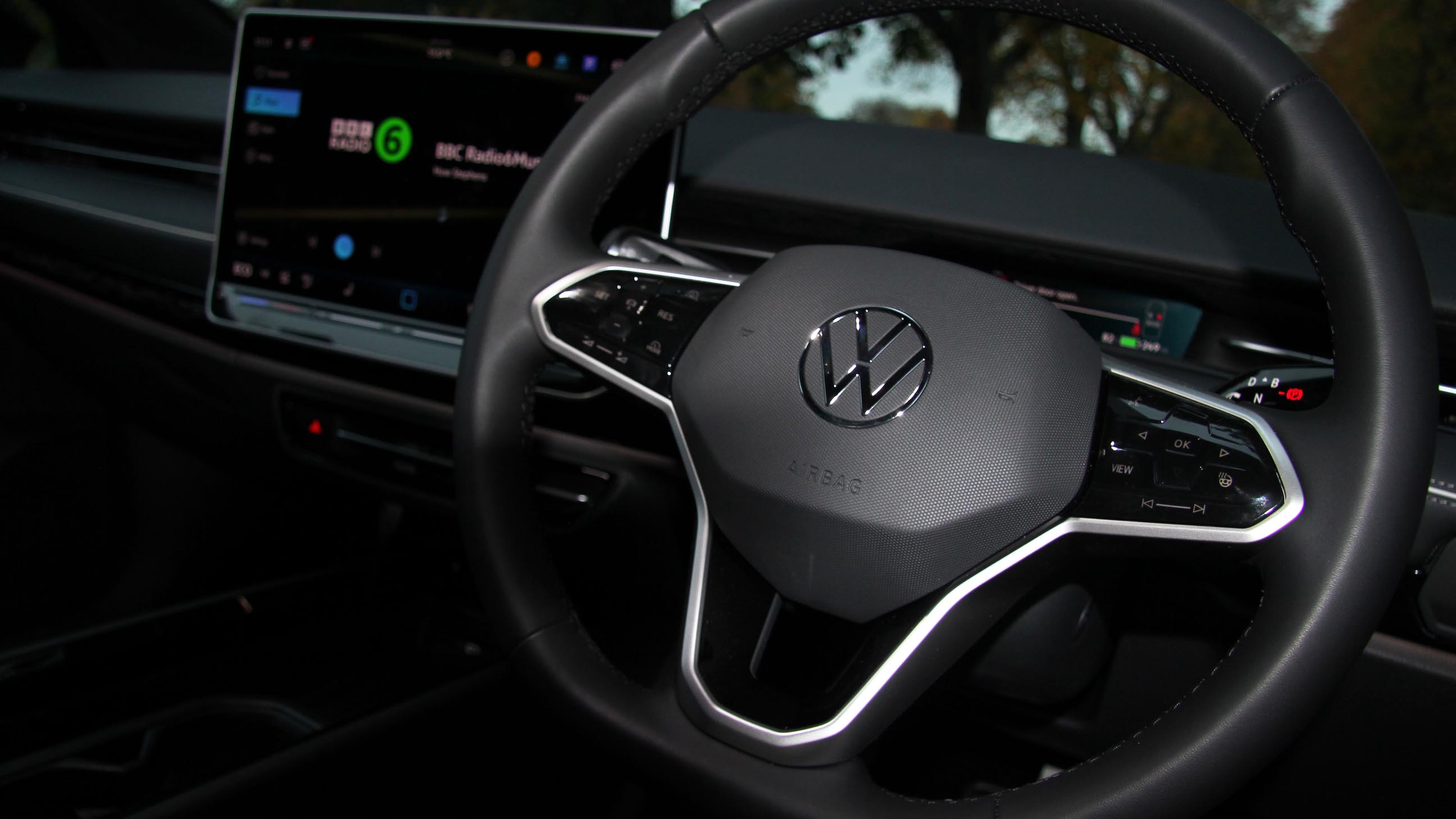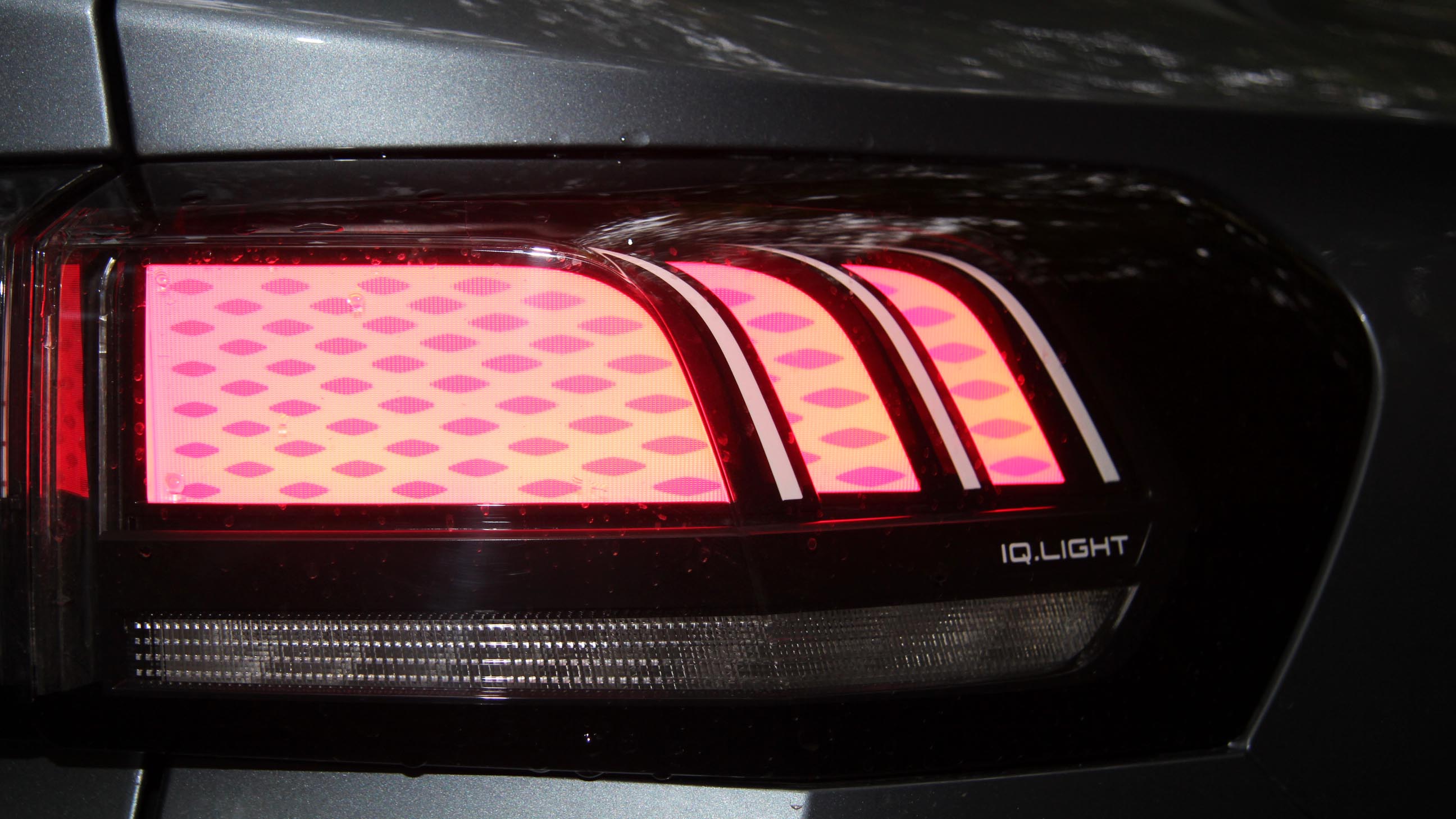
SPEC HIGHLIGHTS
- SPEC
Volkswagen ID.7
- Range
383 miles
- ENGINE
1cc
- BHP
281.6bhp
- 0-62
6.5s
Can the ID.7 prove that VW has turned a corner with its EVs?
In attempting to execute its post-dieselgate mea culpa, VW moved hastily in its transition to electrification. Too hastily. I’ve enjoyed aspects of IDs 3, 4 and in particular the Buzz, but alongside all the good intentions you also got a load of gremlins. Hateful UX chief among them.
The ID.7 arrives as something of a corrective. As well as moving the company’s electric model line upmarket it also aims to reignite the idea that VW, for so long the default choice, is inherently trustworthy. Excitement? That’s over-rated. The answer to most questions? ‘VW Golf’.
The car world is all over the place at the moment, but one thing the ID.7 sure delivers is value. It has rivals like the BMW i5 and Mercedes EQE in its sights, but as TG’s latest Lifer hits the road at £52,030 it undercuts them both considerably. The only options fitted here are 20in ‘Montreal’ Black diamond-turned alloys.
At 5m in length, this is a jumbo ID, the biggest car VW has made since the late and in some quarters (including mine, because I’m often tempted by cars in classifieds) lamented Phaeton. But you also have to factor in the likes of Hyundai’s idiosyncratic Ioniq 6 and of course the Tesla Model 3. Both are smaller than the ID7, but packed to the gunwhales with the sort of tech firepower that makes these cars so intriguing.
As a kid I was obsessed with drag co-efficients, despite being rubbish at physics and maths. The ID.7 isn’t a looker in the traditional sense but it’s phenomenally slippery: its 0.23 CD makes it one of the most aero efficient production cars ever made. I thought the future might be a little more excitingly rendered, but low drag means more range. Ours is the Pro Match version with a 77kWh battery for which VW claims a range fully charged of 383 miles. With winter almost here, we’ll see about that. It uses the same MEB architecture as other ID models (and the Ford Explorer and Capri), but with a wheelbase that’s elongated by 200mm over the ID4.
It also has the most efficient version of VW’s electric powertrain, which can now manage higher thermal loads as well as reducing friction in its single-speed gearbox (it says here). The motor is also the most powerful yet deployed by VW: in this car it makes 282bhp and 402lb ft, funnelled exclusively through the rear wheels. (For comparison, the GTX version gets 335bhp and all-wheel drive.)
The quasi-fastback Tourer version in that spec is likely the peachiest ID7, but so far I’m enjoying life with our car rather more than I’d anticipated. The early ID cars were scuppered by their hopeless HMI, but this thing is just seamless. Its connectivity is flawless, hooking up my phone in a heartbeat every time, executing functions with zero lag, and basically doing what all new tech promises to do but so often fails to deliver: make life simpler. And get this: not only is turning off the lane assist and speed limit warning shiz the work of a moment (there’s a short cut button), if you leave it on the system is sufficiently subtle that you don’t want to punch the screen or yourself in the head.
This bodes well.
Featured

Trending this week
- Car Review
BMW 1 Series
- Top Gear's Top 9
Nine dreadful bits of 'homeware' made by carmakers






